https://cool.sa/wp-content/cache/breeze-minification/js/breeze_cf53b91f8b3ad06b28e17e9a4fe085effd8f1a74cce2d6031b7b9161125c084ec2abb751bcff4835360d74f54f713eb44cc22fc45ff1139616780837fb83eac0.js
https://cool.sa/wp-content/cache/breeze-minification/js/breeze_7178d11f9f45fba9c81dc394efde2188e0a4eeda3ad4358efd7513b34e2c0ac131c8499691d3bf38d780f96dc4fe52cb10c878e4324056d4d309259a73a216aa.js
https://cool.sa/wp-content/cache/breeze-minification/js/breeze_148e703c8e51086459b9a6fc0f431e832fc96d9547e09419696ce0cc7ac441f1414cfff58ec4af3a82a2da97d4f3f3e3490b801a81e7277b8a55a5f460394752.js
https://cool.sa/wp-content/cache/breeze-minification/js/breeze_960a36977ee8251c3842289dc54fdb12814bd3c9c31844a148dc38cfdf6ce01bc6182e616032c594a228ce1730416dfe6950c31ed3147569ea94e9e910156da0.js
https://cool.sa/wp-content/cache/breeze-minification/js/breeze_ac1262fe7a4f8823dc93d4f8a912e0313e6a37380a2934324f0ced1183bcb789907520b8cea0d67c8c486d6c5a65761ff9375cc6a4b88a17512827826e566f08.js
https://cool.sa/wp-content/cache/breeze-minification/js/breeze_143b2d8d92807bc6521f0e61f841fa54c0db71ec807773acbd0d3412eadf4387c31414554e2e01f5bcefbd4cf2be9891e3664d6ce9888142d84349648349e0f2.js
https://cool.sa/wp-content/cache/breeze-minification/js/breeze_aea7f5a05a5e46774a150b993bedf4bf59d2e91c6f45d3beb2dad052176b5f6d0db0368a5cda8160f69238552bcc6befc507b3f50bd7c3339d5400316e5eb2d8.js
https://cool.sa/wp-content/cache/breeze-minification/js/breeze_291c125ca13d35f2668333c3995c456a806d58b4f4ed76b82206f6e3aff45923a1765958d89cbeca1db91c735096695b2d8f53fd6f4f7cdde9ac28ee539c6ac9.js
https://cool.sa/wp-content/cache/breeze-minification/js/breeze_ea73423e75fb8fdd9464ae4d574f6c99ab626edb417f578ada0f101d1bc05c6a8144dbd713bc1ff2ee90aa4ead9885643e0abf9fbff434ee9187f6da9e8ed6fa.js
https://cool.sa/wp-content/cache/breeze-minification/js/breeze_445965b952e522480d992cbac1de0330707deb2c888b4326de0eadec70e8ae7d8d38a81fdf5c1dec73c6dc9ec94a07c8508a6af3c206ae7c2f8d7a93f6de9ffa.js
https://cool.sa/wp-content/cache/breeze-minification/js/breeze_a129f484f4eb76ec606a085cbf400eeaab623145fe206278cc1d4e7e613c38fc716616f93c2611d07baa17b3c640b3f3f16ffdcb3778418a7dac6a775316caf6.js
https://cool.sa/wp-content/cache/breeze-minification/js/breeze_310f55740f1b3d8923e135657823fa5b8ea014ec8de46039e8d1f522fc9ac8d70c269dc79f902ea439b33f0a6ac3f326efe63d87334f15e8b0fe8756162faf9e.js
https://cool.sa/wp-content/cache/breeze-minification/js/breeze_27f687a7793cd4db8269942a7bbcf377ed81e61c2c1ec92f8faf6048754005a031888d66b625cb9f8d7945220d045d8f18d2e76319d5423414439ff6ebb250bd.js
https://cool.sa/wp-content/cache/breeze-minification/js/breeze_5d59c7da911ec6ca4e60146f13fb3e01756bc49c2fa25866f062ae1c528e2aff4ffb97f9dc2e4e0c4952820b215b46bc6590a5221f90635a57c9bc91fbe5b2e2.js
https://cool.sa/wp-content/cache/breeze-minification/js/breeze_d82da839a4c42dd04af60c5fea906fd797e1b9f09d94c8d7526c6c927b7e8ad0af1eac3232f6a8f91c3c01aa760baacfef1052dcde14d429c5651ad311e38adc.js
https://cool.sa/wp-content/cache/breeze-minification/js/breeze_f41d137c82b9a7adfa5321c8f99492f3bd9df33355a83403caccea9e8de00c84cd92341da51a3e48ffc8f564dc697fda159d7a39bb8861ff9e7b77784443d07c.js
https://cool.sa/wp-content/cache/breeze-minification/js/breeze_a0e1b33fe053e1e13069e8d850f1810bf189a261f8ab920cb28261b243b6bc82961b44a52eca61b63d94ea1b4f9039117fcd85bea3dcd68a55776123355e085a.js
https://cool.sa/wp-content/cache/breeze-minification/js/breeze_63c6f543e8222647f8d2214d1a49bccfc4d1bd1037216115a541d7c78a6a6070b6477d4337b43bafa8976e6806411b2ec35882dcb9da91ad515d7c461a456db7.js
Skip to content Home / Electrical / Eliwell Thermostat IC Plus 902 NTC-PTC 230 V W/P
Eliwell Thermostat IC Plus 902 NTC-PTC 230 V W/P ﷼ 265.00inc. VAT
Eliwell Thermostat is used in electronic appliances including refrigerators, Air conditioners, Ventrilo-converter, fan coils, heating systems, Aquastat PAC, Boiler Aquastat, and many more.
Description Features The thermostat shape is rectangular. The model is ELIWELL ICPLUS 902. This product is universally compatible. A battery or corded electric power source. Temperature is measured using sensor technology. The system switches between heat, cool, and off. Cabinet and Flush mounting options are available. Trim Plate and Display Base are included items. The display size is 1.5 inches (3.8 cm). The characteristics include a digital display, night light, and adjustable thermostat. 230 volts is the voltage. It can be programmed. A thermostat is a device that senses temperature changes to keep an enclosed space’s temperature almost constant. It sends electrical signals when the temperature rises or falls below a system’s set point. A thermostat also includes relays, valves, switches, and other components.
Eliwell thermostat IC Plus 902 NTC-PTC’s most common uses are to regulate fuel flow to a burner, electricity to a heating or cooling device, or heated or cooled gas or liquid into the region it serves. The thermostat is also a component in some kinds of fire-detection warning systems. Many electrical goods, such as air conditioners, refrigerators, boilers, fan coils, heating systems, Aquastat PAC, and Ventrilo-converters, employ Eliwell thermostats.
In this post, let’s explore its basic working principle, types, pros and cons, and industrial applications.
Basic principles of working for a thermostat A thermostat regulates the heating or cooling system by setting a predetermined goal temperature while monitoring the outside temperature. Temperature sensors, controls, and actuators are essential components.
The role of the temperature sensor Temperature control systems rely on a variety of sensors. Thermostats, such as NTC (negative temperature coefficient) and PTC (positive temperature coefficient), reflect temperature changes based on changes in resistance value. Thermocouples are renowned for their excellent precision and broad applicability. The temperature control system receives real-time data from these sensors, translating the outside temperature into electrical impulses.
Kinds of thermostats Basic temperature switch This kind of thermostat regulates the on and off of a circuit to change the system’s temperature. It is the most basic kind. Its accuracy is low, nevertheless, and it works well in some straightforward application settings.
PID Controller This controller integrates the proportional, integral, and derivative control functions to regulate the temperature more precisely. The PID controller continuously modifies the output to minimize system mistakes and enhance temperature control accuracy and stability.
Advantages Digital technology enables accurate temperature regulation. The LED display is simple to set up and use. Solid-state components make it dependable. Flexible—it can be applied to both heating and cooling tasks. Disadvantages This concept is restricted to single-stage control. It requires a separate power supply (230V AC). Not recommended for highly complicated temperature control applications. Industrial Uses Systems for heating and cooling used in industrial operations (such as the production of food and beverages). The Eliwell thermostat preserves the temperature in environmental holding tanks. Building-based HVAC systems. Refrigerators (for example, cold storage). Heating systems and boiler aquastats. Conclusion The Eliwell Thermostat IC Plus 902 NTC-PTC 230 V W/P provides an adaptable and user-friendly solution for temperature control in various applications. Its digital display, customizable settings, and compatibility with heating and cooling systems guarantee accurate temperature control.
Thanks to its solid-state construction, this thermostat meets the demands of both homes and businesses, including sophisticated HVAC systems, refrigerators, and air conditioners. The Eliwell Thermostat IC Plus 902 NTC-PTC 230 V W/P is a strong option whether you value versatility, ease of use, or industrial-grade durability.
https://cool.sa/wp-content/cache/breeze-minification/js/breeze_603d00406d192632909223a5b15b158a65133b42e9f9e27c605a11f037540dd31a3c4579cfc2f263bb7d29941783d29364a5e541822c6db05928dab132bc713e.js
https://cool.sa/wp-content/cache/breeze-minification/js/breeze_6047fa35b8af3fa9316da300df154ac4c8f08685ad1a889e95a8dae3237518c7d9bf3ce4157762b4a75f4d658fe7da6aa1f4deb42bd045d18190eef9ad383f18.js
https://cool.sa/wp-content/cache/breeze-minification/js/breeze_6b82e20e99e8a57178afd50be19a2d5ecbf7062879808d851b3b5aa2b0a8a629ef06413f19dc9a6cd7a22d23e5d67e133fb70ff8030e0f6d6a494260d0085739.js
https://cool.sa/wp-content/cache/breeze-minification/js/breeze_6de117cf7bedcb5f455acf1f0ffc0ef92fe8100b03a46c5deb542b674e0461309678403478c963166b6dc2cfacb5fdda08c5230f047fa607b3b136790489e0f2.js
https://cool.sa/wp-content/cache/breeze-minification/js/breeze_f72b4506a6f6c54a35cf3f07f7ff79987256b6003989852ff7e5839be958283a9b3632855ceeb2a967083211745469a97b591f639d367fd3866d5626956fbc4f.js
https://cool.sa/wp-content/cache/breeze-minification/js/breeze_fd9c6843b94a3297ac1bab3d5c5eeee494dcc14eb91354bb46665ba297181fc9dd6608baa21973cdfbd945efe82f1b5d3347d5f609532e6228c10647bdb35527.js
https://cool.sa/wp-content/cache/breeze-minification/js/breeze_b1c8dec0028f68e04f036c82cb8384a5c024e15da41c885f94745495d53b3d2dc3603b4f263116528356d30439b585eb30ae8dcbe5bc4c1924466e93df90e9b6.js
https://cool.sa/wp-content/cache/breeze-minification/js/breeze_3c61d1904917e309244e15d4d68f830c8e7eaf454bfdd4232d19d4e6d98ddf55c61d1ec5bf29b4b38edf4e68caaae9daf6e0342ef93a3db8ec0816883b5489d5.js
https://cool.sa/wp-content/cache/breeze-minification/js/breeze_bcf41d0b1cbcfc75d6b6564e30bed1c9d0d4a20fa714e91082e0d4bc4bcdbc3ed63422f027a2330770d5ec00c79b5df8b14ce015e556dcd6b70e3205827d7f2c.js
https://cool.sa/wp-content/cache/breeze-minification/js/breeze_9ab3a4912ac86d8a164372b84a9a01ea15a58435d9380198f10350abbccaa525f3faaed7ae30681e8c9780816de1ad7d3b577aa7696746d751b47dfb43365a98.js
https://cool.sa/wp-content/cache/breeze-minification/js/breeze_5bfcef1e3d394d66740928bffe44722eaedaa12f784f31be465c9bd4a17158f232488673b5f592c87f7ea261ce392ec2eae62501dffb03a17b529aed8bb44a6a.js
https://cool.sa/wp-content/cache/breeze-minification/js/breeze_07e81038ea14e791cff699d1e986650bcc15a54b37c876fab5efdfe91d7708ddeffc9c631cb738a9af659e50b90c86a5ede779204010177e2065befea52c0071.js
https://cool.sa/wp-content/cache/breeze-minification/js/breeze_11a1f3b8bed1f6a801b95eb74785e1c01a42c0fdba1a86d8d90bfbf560ddd324eb5e948732c2c7d62dfa3394088cce93480333c5aae6676b5c56c3d6a9a19004.js
https://cool.sa/wp-content/cache/breeze-minification/js/breeze_ca9ffafdd750df6b29f03d7507a38b937a17a545188ec7ccd7cc747158f68b9f7b5efcbbaf52f73e16c29d50838c4df8f2edae914658b98c8108986a1d301945.js
https://cool.sa/wp-content/cache/breeze-minification/js/breeze_c768ae84b6cc2c4baf064adf2d14277ab42cd1943aaae2f61a461c08cb41086d2d6e25dec0cff9c51070a167b56ee505116dff104bb608fb67c2003b56c338fa.js
https://cool.sa/wp-content/cache/breeze-minification/js/breeze_5576751b68bdbe23107df7ed6a1f5ff1ae2970742143aa8c3c48e88ae580bc2571b1d2b0bf475ca935a1702a6106b485659ac5bec4ac9545422c53fdd74f05c9.js
https://cool.sa/wp-content/cache/breeze-minification/js/breeze_8a6ebf601512e44d302b2fc86c9d709adbd782156de7f04bfbc8a18c20f975b6768c76ef9c24dfc87e17e43a7009626c3c066d58020bb92e7123250b1d365124.js
https://cool.sa/wp-content/cache/breeze-minification/js/breeze_bab22f1103865614643fcca93b26e0cd63e0ead7877af415d0d1399d7a3aada1b7e3486424a67a434b3bea6ce3d2bf7378e0f1f1f23c4c8bd0cdeaa1e9421b72.js
https://cool.sa/wp-content/cache/breeze-minification/js/breeze_5ad557419836a33ecf67c88fab448798a7d46572eb1c8ebab15184b270a37e9d0d92a83ae6e2c9e27943a29ed3c56b4ac8d2e4737809e8e26e8cf999ae6fac3a.js
https://cool.sa/wp-content/cache/breeze-minification/js/breeze_2de287774d0e023227bf9fa9265f6af358fff11e18ee93ac97527d57b8391d1f160b6f6eb7c4bc0586111a50bab00f3bacc73a49962ae69830227044a1d90500.js
https://cool.sa/wp-content/cache/breeze-minification/js/breeze_4f1b511a5936666ee5f9b21aa350538f8f5a4034f618c1c87e6219a4769ba1884870016310c8da2e4aff7c75d7158ff2057557679987e908d022bd85328d76d6.js
https://cool.sa/wp-content/cache/breeze-minification/js/breeze_10b23c76cdb175b7de8eb1b77b30c52331ae8925b6204dc66fc8b1741cd9c54902310f1e9e177a1f918cf1aeef5ee162f4855f70e96d2349eb89a8afcf150aa6.js
https://cool.sa/wp-content/cache/breeze-minification/js/breeze_92ec09b49b481183738d6c4cbe06ef2577ac0cd4b8e34a530a1ca3159efcbe0d2bf7028b51e0d851e606bb14c6a369a1261c4059b1530587fd052ccbb9f93991.js
https://cool.sa/wp-content/cache/breeze-minification/js/breeze_2480ad1d3298ccc6ea74067bb792d446b88b6c04635ad7fd8c3d8c5719ec6b5514a1afbd76e288bb344c22579ed9f9435682d03ba421398d3b57bb4da237eb6a.js
https://cool.sa/wp-content/cache/breeze-minification/js/breeze_1cf71b8e9b3d3562b2c14644f1e6a00c1b351a8d0b9153a4676a0c004ce4344f707159fd6434c4d95f707d97ebbb57eaafb26092996a52d38260d59b80df51c7.js
https://cool.sa/wp-content/cache/breeze-minification/js/breeze_44328bdf63715de1b041b257b8742e7e66731dd19bc64516e437122d77022413493d50f2612830f7224bf3e9988d9b6b7069435bd7b58809db6bda7988793368.js
https://cool.sa/wp-content/cache/breeze-minification/js/breeze_0285428b6ab7e99f5b92118bd7b2b09c8af487753a508e6683347b271168fccff7129099ed3d1dec5f73d968a7a97bce16bdf96397c5f38876c3cc2cc5aee2c5.js
https://cool.sa/wp-content/cache/breeze-minification/js/breeze_7e87f817d011c4face7390f8ae0c453f61beb00a26bc139addbe620b8935da622028d6d1dff086c9b446d238fff76f8b580e795aec6ca915fbc6ec6e2ebc12fd.js
https://cool.sa/wp-content/cache/breeze-minification/js/breeze_24d8405a46a2cd51f17282e1ba5595a1f2bff57c80383d0d366e005fc8c2f655d66c97aff74cca2fe7e3fbc9b4b11cda60feaf1fa7cd7c6230a4b53538159aad.js
https://cool.sa/wp-content/cache/breeze-minification/js/breeze_ec8ca930deaef573370fa83dc76f2449c3613a26424a5443511d23348e0fd95c5ebbef1ff53038d75d5081ad2ec74db6b46daa7cc450d605178b6ad66b9dcf4c.js
https://cool.sa/wp-content/cache/breeze-minification/js/breeze_b7926cab2c0b45431c6b45b381ae26840ff2fa4a892e69d8b490ab57ec8c1b877ec8b296e72c1e2783462cf1298592fccecb4356aa371d73d8b37e0377f8f416.js
https://cool.sa/wp-content/cache/breeze-minification/js/breeze_0b0a2ba235fa54c140da77f590ae12316b5b2cf47fab73a6fa073da7fb49d98448db6ccc7a7221488e80e7abc88eadf5881c846b9ccccb82a0fc02539465cb03.js
https://cool.sa/wp-content/cache/breeze-minification/js/breeze_5868d9ba7fa99c17ffbaf4c7d38f38fb9bc0bb525179dbc5249145f4ad00763076275ce343efdd865c112fe274fec226b28e052e7d8148a74a78f1d965ae0d2b.js
https://cool.sa/wp-content/cache/breeze-minification/js/breeze_9d7e6f41b8b84223e5c708690cee597118849eb1fe78027632512809d94df7581257d4700aef6ef172a5717e9eb0fbc276b834025c587625922f7fac42e066ab.js
https://cool.sa/wp-content/cache/breeze-minification/js/breeze_10393cc7a0eb2d79304f943a1a800b69ce317a91ed75f137d0f060a8ad9f886f76a74cb828d5aef6d00a1f941ddf90e543bdde9178e697cd5bcc07e721e8df95.js
https://cool.sa/wp-content/cache/breeze-minification/js/breeze_0d92dba2d94665b9f1b6563787be5ade9c520801014587d3f131bcf1cf475df460e5d76e9c39e3f21abac3fd399b8d2acf6a1827f5be692da77bca4dbe1df8ce.js
https://cool.sa/wp-content/cache/breeze-minification/js/breeze_908f0601264270ba574bbd2ad100418f094a3bfc9effc627326b11cd8dc110338e593639a08dd5b82ccb2c0386af49450162e8fb9630fd04ff11b39e85493fa8.js
https://cool.sa/wp-content/cache/breeze-minification/js/breeze_63060a30df17e2a3518562dca7fdead7fc7c4ea5d493e1523c3cb1f4bf12d683ceff0605388d278ecf69f4e0a6d746dac59292c22967682a61d1f7b6fec41d8f.js
https://cool.sa/wp-content/cache/breeze-minification/js/breeze_46102121140e4236a942762343df6b98326b2cbfc30c6d2aad7134a0b6dc0a2a6a75ac11bdd5d2e14fd6b6ad14d401fc365dc07510e31d7122ee9898a72a226e.js
https://cool.sa/wp-content/cache/breeze-minification/js/breeze_aebe9c4f0f7ac2f2d1b4915e42384009339c893e282e52440bf2f5cce627007d09e721451a50e242a2217fe723716e778a63c6c30cc920703fb670c8af010af7.js
https://cool.sa/wp-content/cache/breeze-minification/js/breeze_61454d10f4aff0f21b3a3865f4f67e70dc4c46d9f73d6b3e6f3019fddab023062aed5048178f04414c998b70e241a5987f73a63ac851cd87bd2373d4dc85b56c.js
https://cool.sa/wp-content/cache/breeze-minification/js/breeze_dcbab8c3fcd89ab85f36f848cd9742fdb185f94f006adf976ba08548d62a30b73b752804db0ac6c8832d2a627cdc5d5a3812b72d3c81a7ae4feacf55fe183952.js
https://cool.sa/wp-content/cache/breeze-minification/js/breeze_c6ffc67e69df3c7315d65484def08123a612d72eec5747cb9beeb20b09d54feed333dce858d72f94bce6cb2a0218beaea9978439dc3bc7e6898c8d81925c01ab.js
https://cool.sa/wp-content/cache/breeze-minification/js/breeze_e1e8d922927bd1ccc64ece3faefc4188e5030a074b25841e7c6b404022785b479e9e7ad0f08a31f305ebaff6b6f6ebeefaa469596d14012b63fe1d8c52bd6753.js
https://cool.sa/wp-content/cache/breeze-minification/js/breeze_4e12a53d8087871021b1e2767d6f2b5f4380381bc30fd48ec1933c2415d7ed374a8efb80d09558ca4dab2d48a50153db3e8a029e0a57a501b2b06ad5b8587e64.js
https://cool.sa/wp-content/cache/breeze-minification/js/breeze_55e92ae934da275a830b744b86dd36e03bb87e3df1ce81a5c7d7c91653bf227b772ea239c40b048411d85bf546f4b24d454cd49385a596ec1313d33b394b23dc.js
https://cool.sa/wp-content/cache/breeze-minification/js/breeze_7cf03fb8b2bcbea3d14a915c929183d53a0e75da2e31a8b17dbd50ce87370ad6e2428a5194beba6f03d37786a8efb0be28c14b1f3ec8bd24e3c7f803c885278c.js
https://cool.sa/wp-content/cache/breeze-minification/js/breeze_5f25fbacfa4a603aa9f79ce88b26a4068d06689a1e90d379a75becfa6e3362a403269def65db071696d4e699c695e8bfd94dd987d3c86197b7e22ccaae7eb2f2.js
https://cool.sa/wp-content/cache/breeze-minification/js/breeze_e34041082a053058be47ce996c6a27c7d8f660d217d4bbb88c76e0f9302a767cd08c533555b0e79ed70a2cf82bc37efcd15640e4336ebbddb45da2965532eaf4.js
https://cool.sa/wp-content/cache/breeze-minification/js/breeze_d57da9abfef16337e5bc44c4fc6488de258896ce8a4d42e1b53467f701a60ad499eb48d8ae790779e6b4b29bd016713138cd7ba352bce5724e2d3fe05d638b27.js
https://cool.sa/wp-content/cache/breeze-minification/js/breeze_33b5433f4fedcd5115d167061533683fb0d895efa06d5be9ab703ee16df722e135f7bb0b5f1dc7905eb5a6f58812f9b647174f788675d3f403acba30a63aa11d.js
https://cool.sa/wp-content/cache/breeze-minification/js/breeze_8f040aeeb8d792829e88704c0b1a4395cf1b2102ca3eddbcdb93744f80629cac326b674fe9e574453f60fc56b55b1367300b6bf4256e15667b39133160db3130.js
https://cool.sa/wp-content/cache/breeze-minification/js/breeze_832fb2bd3177d9430b9736e4ab91dbf94c481262ad913e3d27ac61359bbbae4b78f94c1db27a8e0c81f26b2daa626a1e6f91ec28f995a5301acf7df401eb4e82.js
https://cool.sa/wp-content/cache/breeze-minification/js/breeze_a890fd1fd05fe4349abec35d2c655894eb94673bcfa26ead7e134a9f9c2d873524b274bfca817d853a652bd80f18158fb228856eafcbc2b98736bcfa8c7aa4fb.js
https://cool.sa/wp-content/cache/breeze-minification/js/breeze_94c49652cdc9eea36d2e30fe3714e50d86a417e3cf9c54ae18784d1bd198e43bf759a0b6ec53bb259bf9213836dc2b740c599e766d9413eff1481a02b0add241.js
https://cool.sa/wp-content/cache/breeze-minification/js/breeze_b0d34bb95c4cf4a624dc9cf329c8328dcf237b090332bcd2a7f5cc48c64790fd4b5f1cea9799c7579aebd17ba2d6aa88435dae10063edba58225533bcfe6869e.js
https://cool.sa/wp-content/cache/breeze-minification/js/breeze_8cc11fea17cdfe1b3c5c9f3bf1ace4754ac31d29ed006ec41dccd9bb8cf5acbd0c40535ed4c59c497cf3327e83421783679713e34381c2d688c47612d98e53a7.js
https://cool.sa/wp-content/cache/breeze-minification/js/breeze_6e41d37de824c5e0ef341fbc7afe3c896401965a806987a412c5b66aedd44f485929e8a85dc23b3028859094a903d93a752abfd51ec130fa7423a459ecb58cc9.js
https://cool.sa/wp-content/cache/breeze-minification/js/breeze_843dd2aa2e421d3ea72fdac3c63ac1de29cf346a625112e75036b7435a000f273184aef2eef061a015cffd1141e1805cf43d8e8935c5b31cd0892dce8cca71ed.js
https://cool.sa/wp-content/cache/breeze-minification/js/breeze_03eb2e32a3d153dc7594910aec41f6b126a55b0a8dc711daa4f2f8e8549ad107a7e09ca21030e4d2137a7ddf8d93d0c3041be3b7a0e4bd25c502b0136c57c049.js
https://cool.sa/wp-content/cache/breeze-minification/js/breeze_cef453b0cd9b50c942dfe57b40fd65037ebf2e7577ac2d631192aabefbfd3f576d68dca7242ec3fadeee75b0d447d8e8a60e01f68e7588f337f439dafebc5783.js
https://cool.sa/wp-content/cache/breeze-minification/js/breeze_adc337e56d6a8ef9ff77307d6e9b187369c8644b28cc89b1ae9669daca31a1e9f4c929cd6261c5208ec64d28970409b84de27ce9a3b1fd93639b57516a5799fa.js
https://cool.sa/wp-content/cache/breeze-minification/js/breeze_8083ad51447a0d24df4ed7bea3d5412f4dfba254d97529aa8dcf02159c84337f800e3566422dadcf09a80d8c1435b63d2e59235b085c7097878fb4600fb0d1fb.js
https://cool.sa/wp-content/cache/breeze-minification/js/breeze_30fcf5af5d87137205854f4c3472aea0015408be31450ae90e10879b2fea596d3bf15a23b7706f808a9818e9f4d78b13fda6a4c8681cb5f6db8a94f9dd90c30c.js
https://cool.sa/wp-content/cache/breeze-minification/js/breeze_fa177c0c688d4b2923a1999f66c9a3cba22ed203084297cd54211eaaefd54bbf87b420db444aafff836d9259b38e9dadc1580a6bc94d486bbdb7af83e092a29f.js
https://cool.sa/wp-content/cache/breeze-minification/js/breeze_e9fdae644ccce0c68145c891ef1507028628b5c00c07a5f30571504158f111c252f16627d405eb3ed4b30062c01936309f443145d0fc8e6be52446829edb08bd.js
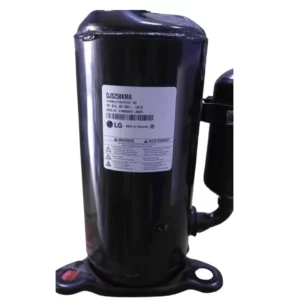
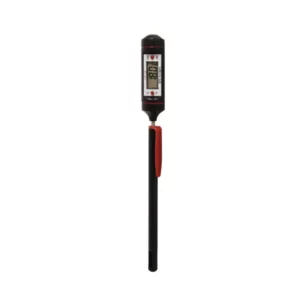



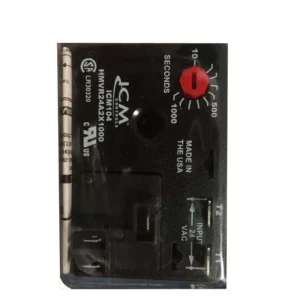
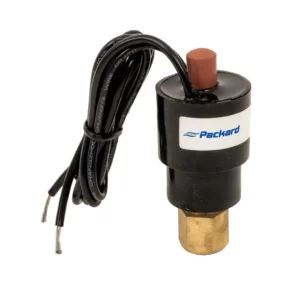
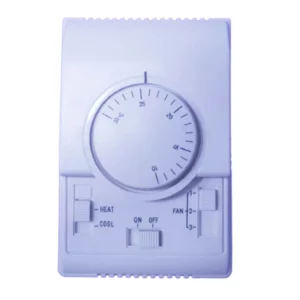
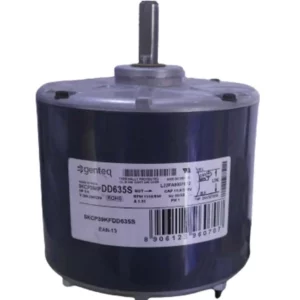
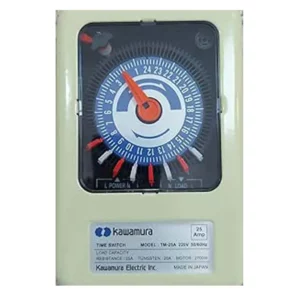


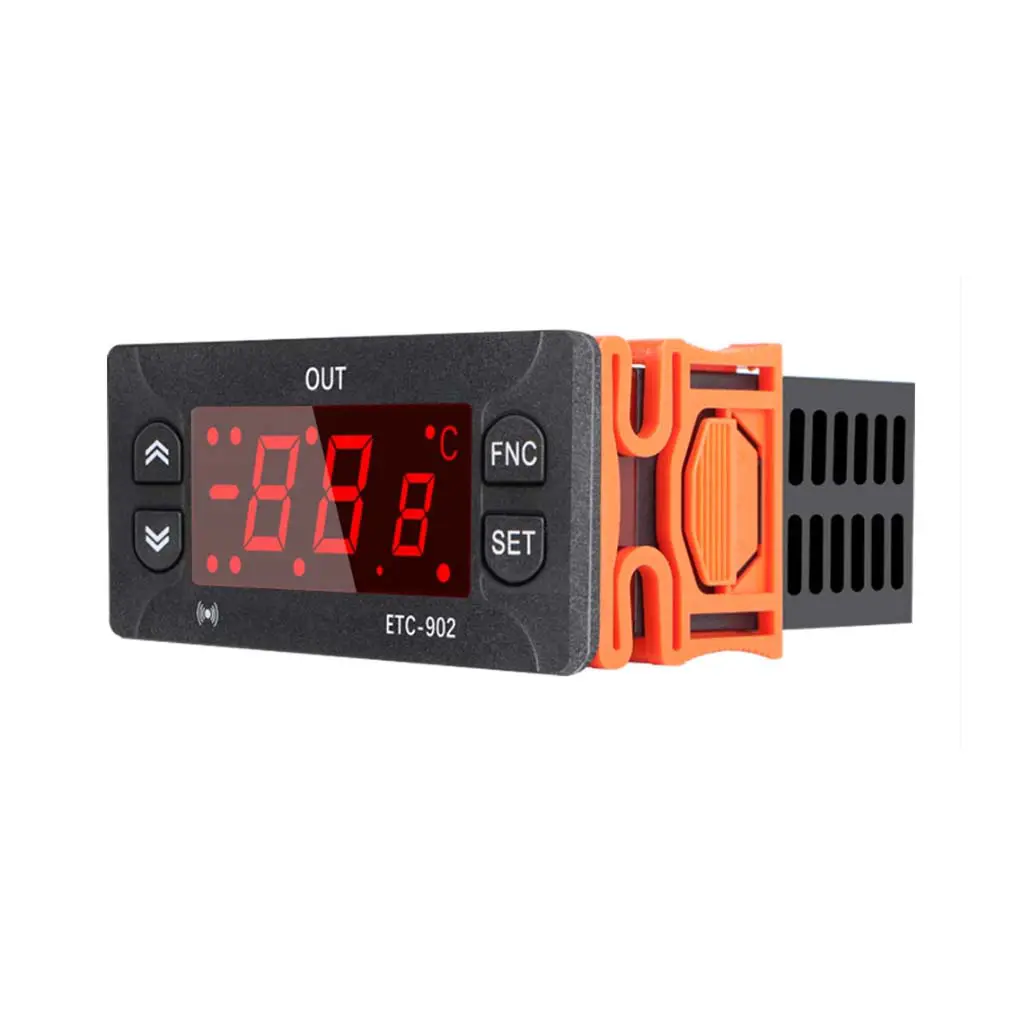
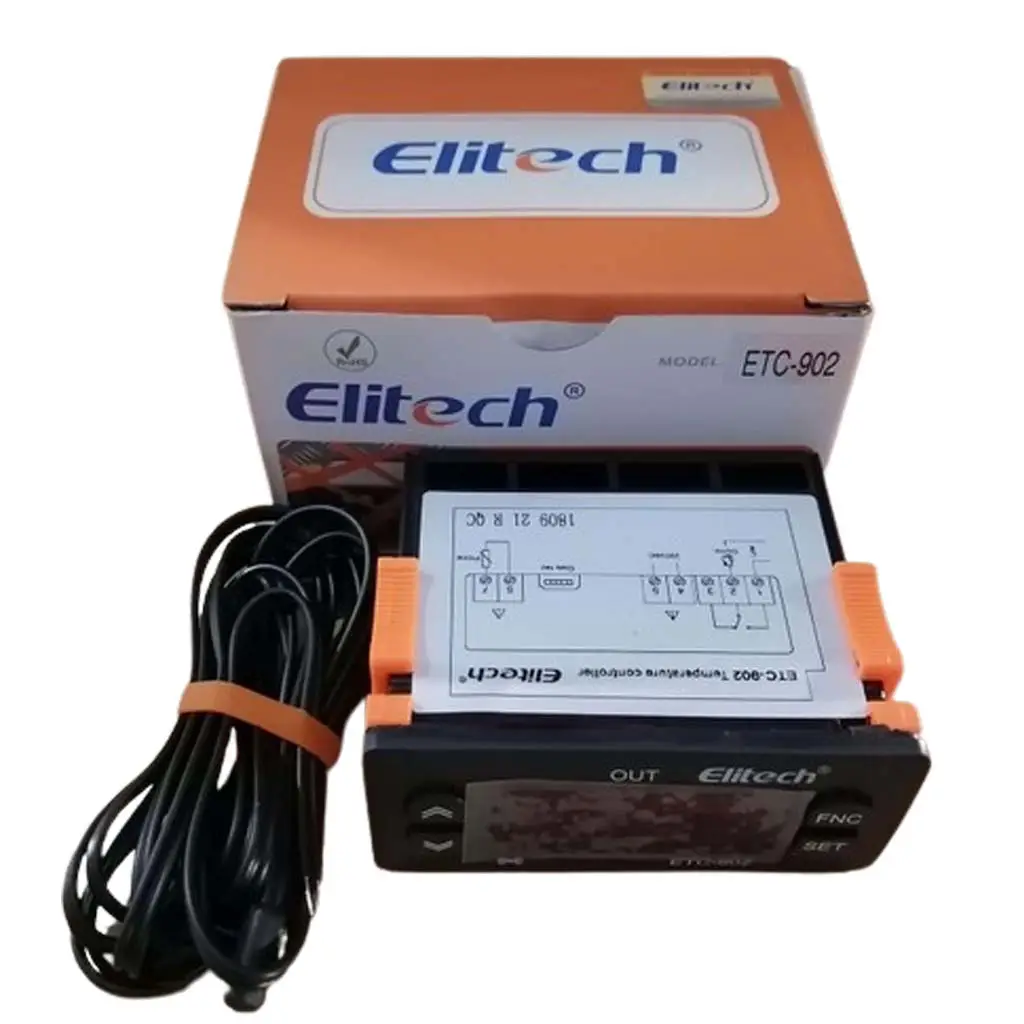
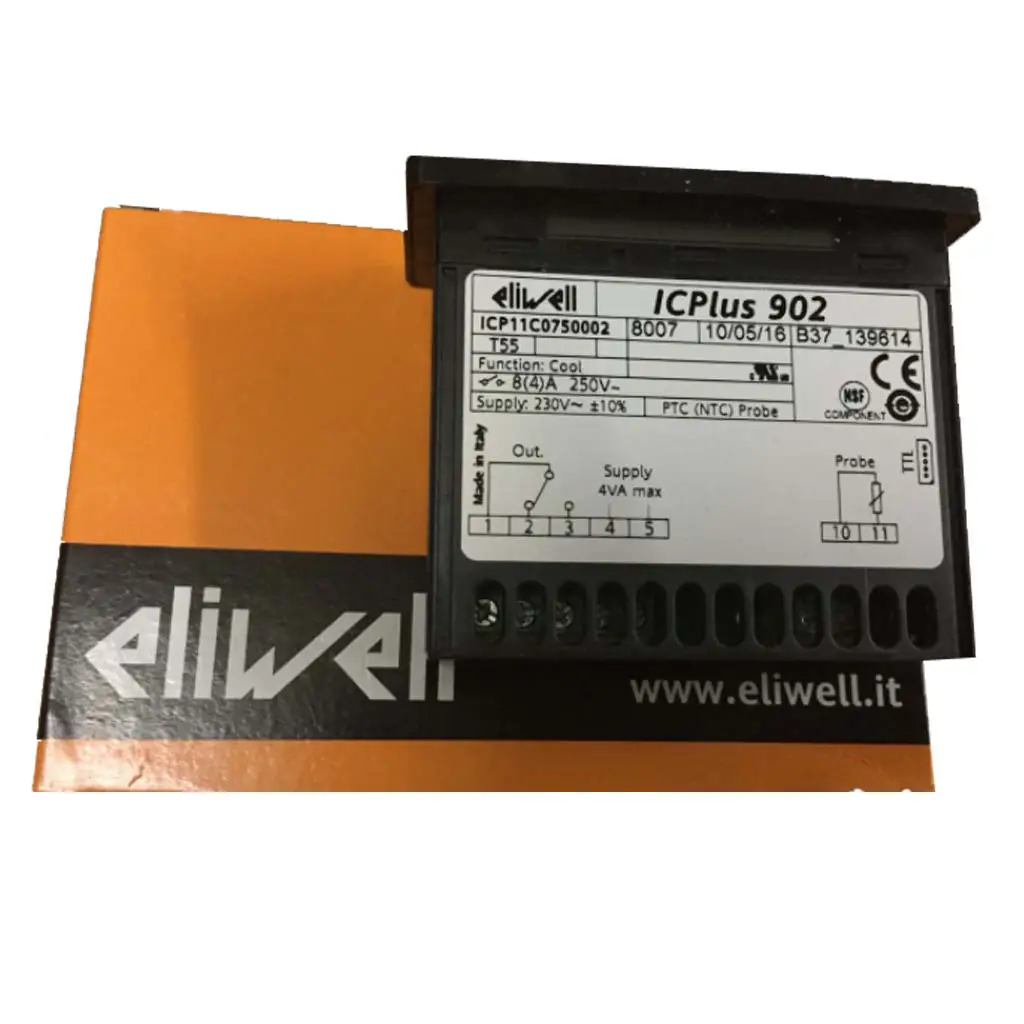

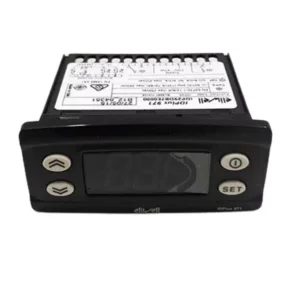
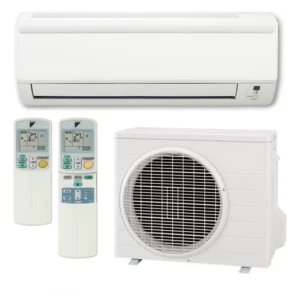
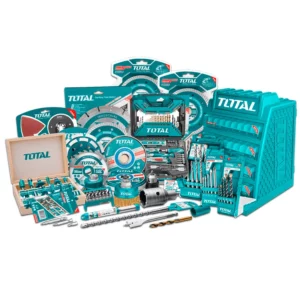
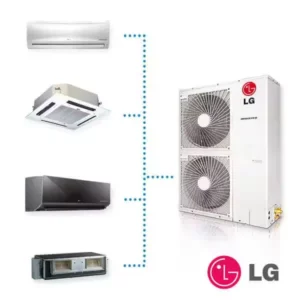
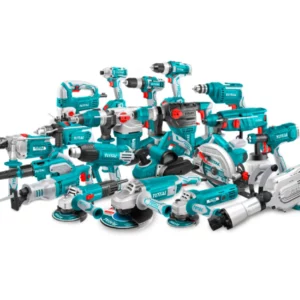
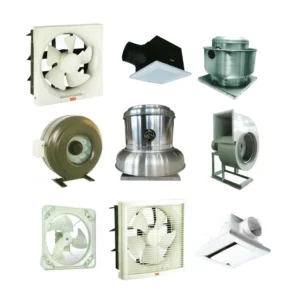

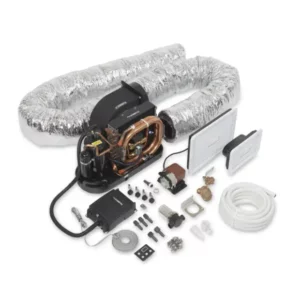
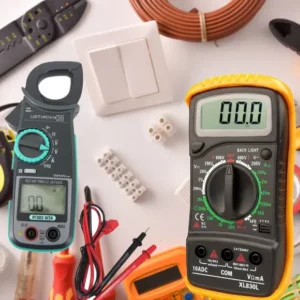



umair –
After experiencing temperature control issues with our HVAC system, we decided to upgrade to the Eliwell Thermostat IC Plus 902 NTC-PTC 230V W/P, and we couldn’t be happier with the results.